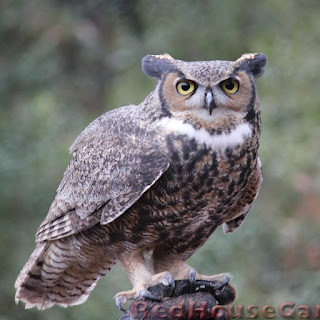In Georgia for the Christmas season, we were delighted to visit the famous
Callaway Gardens. Callaway Gardens is best known for their enormous display of over 20,000 beautiful
azaleas. Some spring I would love to see them all in bloom! In winter, however, the main attraction of Callaway Gardens is their holiday light show,
Fantasy in Lights, a five mile stretch of various holiday scenes made up of over 8 million lights and accompanied by music.
My two and four year old girls were very excited when they found out we were going to a light show. We arrived a few hours before nightfall so that we could see what else the gardens offered before driving through the lights. I wanted to see what winter gardens they had - most likely located in the
John A. Sibley Horticultural Center - but for some reason looking at plants was low on my kids' list of things to do.
 |
| Aha, some winter flowers at the famous Callaway Gardens! |
I managed to see at least a few flowering bushes - flowering quince, I believe - on the way to the first event of the afternoon, the
Birds of Prey show. Callaway Gardens has about a dozen different birds that rotate in their shows, and during our show, four beautiful birds were displayed.
Each bird was allowed to fly around the small amphitheater while the trainer expounded on its traits.
 |
| Great Horned Owl in flight |
A few months ago, a man came to the place where my mom worked to ask if he could use the roof of the tall building to capture a hawk for a Bird of Prey show. Thankfully, they told him no. Capturing a wild raptor is not only sad, but also usually
illegal. The birds at Callaway Gardens are all birds that have been rehabilitated after getting hurt or are in some way unable to survive in the wild due to well-meaning people finding them and 'rescuing' them.
We often see hawks like this
Red-tailed Hawk flying around our area in North Carolina on a clear day, looking for prey. This might be why I see many more birds at my bird feeder on cloudy days..
 |
| The red tail feathers for which the Red-tailed Hawk is named. |
It was fascinating to learn that not only do hawks see much better than humans do, they also see
faster. To us, the wings of a flying hummingbird are just a blur, but a hawk can see and register each wing beat. All the better to hunt with, my dear..
 |
Guinevere, a Red-tailed Hawk at Callaway Gardens
After being named, Guinevere was found to actually be a male bird. |
Most hawks are solitary hunters. However, at the Birds of Prey show we had the fortune of seeing a
Harris's Hawk, a type of hawk that hunts in packs.
 |
| Rohmann, a Harris's Hawk at Callaway Gardens |
Harris's Hawks, native in the Southwest, are fairly social birds and often live and hunt in family groups. Because of this cooperative hunting, they can take down larger animals such as jackrabbits.
 |
| Harris's Hawk |
The last bird to be shown was a surprisingly handsome
Black Vulture.
 |
| Vinnie the Vulture, a Black Vulture at Callaway Gardens |
Vultures and other scavengers actually play a very important and much-needed role in the ecosystem. They keep the environment free of carcasses as well as limit the spread of many diseases. The stomach acid of vultures is impressively corrosive and can kill germs such as botulism, anthrax, and even HIV, according to the bird's handler.
 |
| Vultures get a bad rap, but they are actually play a very important part in the ecosystem. |
So it would seem that nothing could kill a vulture, right?
Sadly, several types of
vultures in southeast Asia have become nearly
EXTINCT in just the past 10 - 15 years due to a drug called Diclofenac, which is used as a common pain-killer and anti-inflammatory for humans and animals. It is often used in cattle to reduce joint pain in order to keep them able to work for longer - however, it causes acute kidney failure of the vultures who eat the carcasses.
Thankfully, the Indian government has finally recently banned the drug for animals, and Nepal and Pakistan are following suit. Unfortunately, it will be some years before the vulture population totally recovers.
 |
| Black Vulture in flight |
For more great information about some different birds in the Birds of Prey show, as well as to see what Callaway Gardens is like in the spring, check out
Southern Meadows, a great Georgian gardening blog site.
Next blog post... Callaway Gardens' tropical butterfly house!










